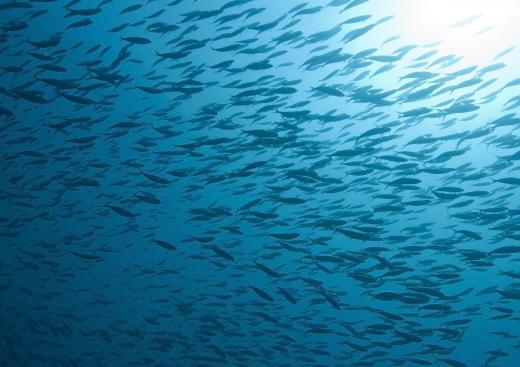What is the Western Interior Seaway?
 Michael Anissimov
Michael Anissimov
The Western Interior Seaway, also called the Cretaceous Seaway, was a massive waterway that covered much of the interior of North America during the early and mid-Cretaceous period, from about 100 to 70 million years ago. The Western Interior Seaway was among the largest continental seas of all time, stretching from Utah in the west to the western Appalachians in the east, a total of about 1000 km (621 mi) wide. Its deepest point was only about 800 or 900 meters (about half a mile) underwater, relatively shallow for a sea. The Western Interior Seaway also covered most of the shallow southeastern United States, including every state adjacent to the modern-day Gulf of Mexico.
The Western Interior Seaway was created during one of the greatest transgression events of all time. In paleogeography, a transgression event is where the world's sea levels rise. This can be caused by melting of icecaps, but in this case, the icecaps were already melted, and the transgression was caused by seafloor spreading, a phenomenon of subterranean mountain building. Here, the seafloor spreading was taking place in the Atlantic ocean, creating so much new rock that it lowered the overall capacity of this basin, increasing sea levels worldwide for millions of years.

The Western Interior Seaway is famous for its skeletons of sea monsters: mosasaurs, ichthyosaurs, and plesiosaurs, ancient marine reptiles that lived during the Age of the Dinosaurs but were subsequently wiped out during the end-Cretaceous extinction. Some of the mosasaur fossils discovered in places like modern-day Kansas were as much as 18 m (60 ft) in length, representing some of the largest marine predators of all time. Mosasaurs looked something like giant marine crocodiles with flippers.
Ichthyosaur fossils are also found in the dried-up Western Interior Seaway basin. Ichthyosaurs are marine reptiles that superficially resemble fish or dolphins. The world's largest ichthyosaur fossil to date was dug up by Canadian paleontologist Dr. Elizabeth Nicholls from Pink Mountain in British Columbia. It measured 23 m (75 ft), truly pushing the limits of marine animal size. These animals had a teardrop-shaped form for swimming, and huge eyes for hunting in dim waters.
The Western Interior Seaway was also inhabited by the iconic plesiosaurs, long-necked marine reptiles. The Loch Ness Monster is sometimes said to be a surviving plesiosaur, although this is highly unlikely. True plesiosaur fossils are dug up all the time in the central United States, with some species as long as 20 m (65 ft). One species, Thalassomedon, had a neck longer than its body, in one of the most extreme examples of neck extension among plesiosaurs yet found. This would have allowed it to shove its head far into delicious schools of fish for snacking, without scaring them away with the massive bulk of its body.
AS FEATURED ON:
AS FEATURED ON:











Discuss this Article
Post your comments